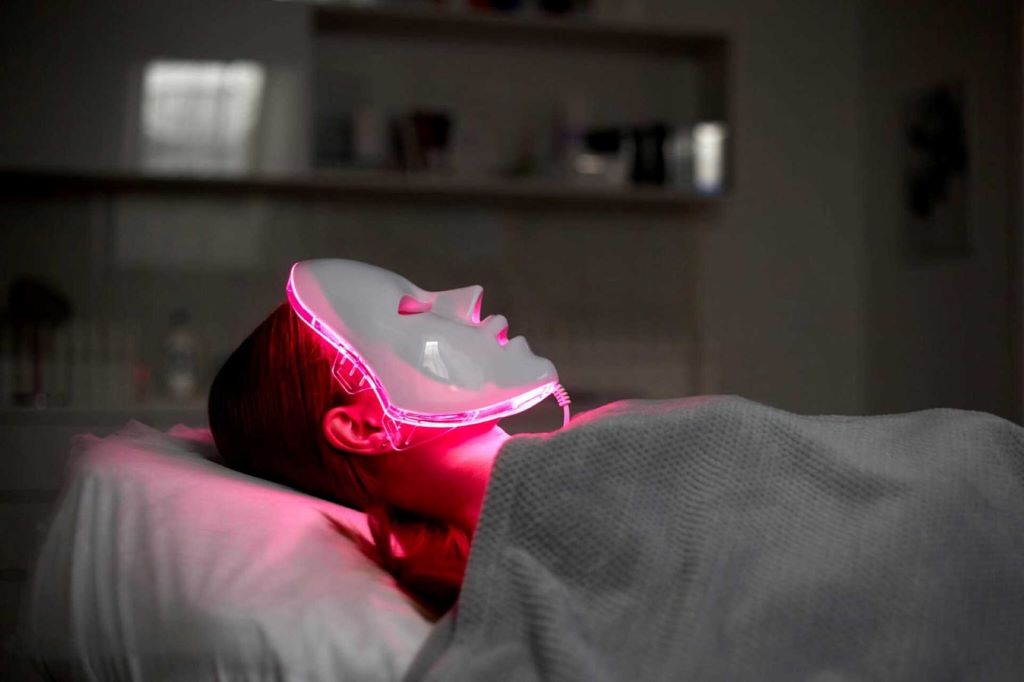
Unveiling the Impact of Technological Advancements in Red Light Therapy
Red light therapy, hailed for its versatile applications in health and wellness, has experienced a profound transformation propelled by technological advancements.
In recent years, red light therapy has emerged as a promising modality in the field of health and wellness. From skincare to pain management, its applications have expanded rapidly, thanks in part to significant technological advancements.
This article delves into the multifaceted impact of these advancements on red light therapy, elucidating how innovation has revolutionized its efficacy, accessibility, and scope of applications.
What is Red Light Therapy?
Red light therapy, also known as low-level laser therapy (LLLT) or photobiomodulation (PBM), harnesses the power of red or near-infrared light to stimulate cellular activity and promote healing.
Its non-invasive nature and broad therapeutic potential have garnered attention across various domains, from skincare to pain management.
Technological Advancements
Technological advancements represent the driving force behind innovation and progress across virtually every aspect of human endeavor.
A. Wavelength Precision
Wavelength precision in technology refers to the ability to precisely control the wavelength of electromagnetic radiation, such as light.
- Early red light therapy devices offered limited control over wavelength options. However, technological progress has ushered in a new era of precision.
- Modern devices boast advanced multi-wavelength lasers, allowing practitioners to tailor treatment to specific conditions with unprecedented accuracy.

B. Intensity Control
Intensity control is a pivotal feature in various technological applications, including red light therapy. It refers to the ability to adjust the strength or power of a stimulus, such as light, sound, or electrical signals.
- Adjustable intensity settings represent another significant advancement in red light therapy technology.
- This feature empowers practitioners to customize treatment protocols according to individual needs, ensuring optimal therapeutic outcomes while mitigating the risk of adverse effects.
C. Pulsed vs. Continuous Light
Pulsed and continuous light are two distinct modes of light emission with diverse applications across various fields, including medical and therapeutic contexts like red light therapy.
- Traditional red light therapy primarily utilized continuous light exposure. However, the advent of pulsed light therapy has introduced a novel approach to treatment.
- Pulsed light therapy, characterized by intermittent light emission, shows promise in enhancing therapeutic efficacy, particularly in wound healing and pain management applications.
D. Device Design and Portability
Device design and portability play crucial roles in enhancing the accessibility and usability of technological devices, including those used in red light therapy.
- Technological innovations have revolutionized the design and portability of red light therapy devices.
- Sleek, user-friendly designs, coupled with portability features, have democratized access to red light therapy, enabling individuals to undergo treatment conveniently in both clinical and home settings.
E. Integration with Other Therapies
Integration with other therapies represents a progressive approach in healthcare, where different modalities complement each other to achieve holistic treatment outcomes.
- Red light therapy is increasingly being integrated with complementary modalities, such as infrared therapy and massage.
- This synergistic approach holds immense potential for enhancing treatment outcomes across a wide range of health conditions, offering patients a holistic wellness experience.
F. Real-time Monitoring and Feedback
Real-time monitoring and feedback mechanisms represent a significant advancement in various technological applications, including red light therapy.
- Some advanced red light therapy devices incorporate real-time monitoring and feedback mechanisms.
- This capability allows practitioners to adjust treatment parameters on the fly, optimizing therapeutic efficacy and patient comfort.

Impact on Skincare
Red light therapy has emerged as a popular non-invasive treatment modality in the skincare industry, offering a range of benefits, including collagen stimulation, wrinkle reduction, and improved skin texture.
- Technological advancements have refined treatment protocols, enhancing the precision and effectiveness of skin rejuvenation procedures.
- Portable red light therapy devices enable individuals to incorporate skincare routines into their daily regimen, promoting long-term skin health and vitality.
Advancements in Pain Management
Chronic pain conditions, such as arthritis and fibromyalgia, pose significant challenges for patients and healthcare providers alike. Red light therapy offers a non-pharmacological approach to pain management with notable advancements:
- Improved devices deliver targeted pain relief through the promotion of tissue repair and the reduction of inflammation.
- Pulsed light therapy holds particular promise in addressing neuropathic pain and expediting the healing process in acute injuries.
Applications in Sports Performance
Athletes and fitness enthusiasts are increasingly leveraging red light therapy to enhance their performance and accelerate recovery from injuries.
- Advanced devices enable precise targeting of muscles and joints, facilitating the rehabilitation of sports-related injuries.
- The anti-inflammatory properties of red light therapy may aid in reducing muscle soreness and improving post-exercise recovery times, thereby optimizing athletic performance and laser skin rejuvenation.
Accessibility and Affordability
Technological advancements have played a pivotal role in enhancing the accessibility and affordability of red light therapy.
- The proliferation of portable and home-use devices has democratized access to treatment, reducing reliance on costly clinical visits.
- As awareness grows and technology evolves, red light therapy is poised to become an integral component of mainstream healthcare and wellness practices worldwide.

Challenges and Future Directions
Despite its remarkable progress, red light therapy still faces challenges that warrant attention and innovation:
- Regulatory standards and treatment protocols require further refinement to ensure consistency and safety across the industry.
- Ongoing research efforts are needed to elucidate the optimal parameters for different applications and conditions, driving continuous improvement in therapeutic outcomes.
Conclusion
Technological innovations have propelled red light therapy into a new era of efficacy, accessibility, and innovation. From skin care to pain management to sports performance, the transformative impact of these advancements is undeniable.
As we continue to unlock its full potential, red light therapy stands poised to revolutionize healthcare and wellness practices, offering safe, effective, and non-invasive solutions for individuals seeking to optimize their health and quality of life.


